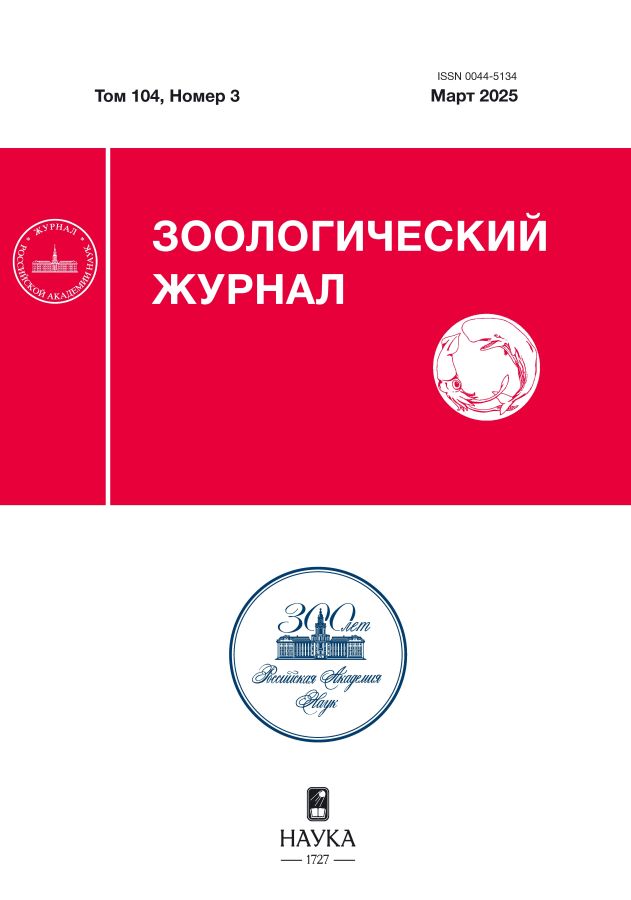Monitoring the larger vertebrates of the Arctic fauna using intelligent AutoML technology
- Авторлар: Sobolevskii V.A.1, Kolpaschikov L.A.2, Rozenfeld S.B.3, Mikhailov V.V.1
-
Мекемелер:
- St. Petersburg Federal Research Center, Russian Academy of Sciences
- United Directorate of Taimyr Nature Reserves
- A. N. Severtsov Institute of Ecology and Evolution, Russian Academy of Sciences
- Шығарылым: Том 104, № 3 (2025)
- Беттер: 112-122
- Бөлім: МЕТОДИКА ЗООЛОГИЧЕСКИХ ИССЛЕДОВАНИЙ
- URL: https://archivog.com/0044-5134/article/view/679404
- DOI: https://doi.org/10.31857/S0044513425030095
- EDN: https://elibrary.ru/acrqrk
- ID: 679404
Дәйексөз келтіру
Аннотация
A system for recognizing and counting two classic Arctic species, the Wild reindeer (Rangifer tarandus tarandus L., 1758) and the Brent goose (Branta bernicla L., 1758), in photographs from aircraft is presented. The AutoGenNet recognition system is based on a convolutional neural network (CNN) of the Mask R-CNN architecture using the Auto ML (Automated Machine Learning) concept. The system uses transfer learning, the essence of which is that at the first stage the system is trained for recognizing a variety of objects applying a standard array of images (about 328 thousand images), to be further trained on images of target objects. This approach allows for a number of images of target objects from several hundreds of thousands at one-stage training to be reduced down to several hundred at two-stage training. A synthesis of the CNN model on the basis of marked images in the AutoGenNet system is performed automatically. A special Markup program was developed for marking animals in photographs and preparing a training sample.
The first stage of system training is performed once by SNA and deep learning specialists. The second stage of training can be managed repeatedly in order to retrain the system that made errors in recognizing the objects. The work at this stage can be performed by system users who have no special education in the field of SNS training.
Two variants of work with the system are possible: a stand-alone mode in the presence of the necessary computing resources or work via the Internet with the AutoGetNet located on the servers of the SPC RAS. The CNN model presented in this contribution was trained based on 100 images of wild reindeer herds. The error of reindeer recognition using an independent data set was about 18%. 260 images of the flocks of Brent goose in different environments, be this on land, on water or in the air, were utilized to recognize Brent geese. The recognition error was about 35%. The AutoGenNet system is unified in terms of recognition objects and can be trained to recognize other animal species without any change in the program, provided they are distinguishable in the images.
Толық мәтін
Авторлар туралы
V. Sobolevskii
St. Petersburg Federal Research Center, Russian Academy of Sciences
Хат алмасуға жауапты Автор.
Email: arguzd@yandex.ru
Ресей, St. Petersburg, 199178
L. Kolpaschikov
United Directorate of Taimyr Nature Reserves
Email: ntnt69@yandex.ru
Ресей, Norilsk, 663000
S. Rozenfeld
A. N. Severtsov Institute of Ecology and Evolution, Russian Academy of Sciences
Email: rozenfeldbro@mail.ru
Ресей, Moscow, 119071
V. Mikhailov
St. Petersburg Federal Research Center, Russian Academy of Sciences
Email: mwwcari@gmail.com
Ресей, St. Petersburg, 199178
Әдебиет тізімі
- Бондарь М.Г., Колпащиков Л.А., 2018. Оценка численности и летнего размещения таймырской популяции диких северных оленей в 2017 году // Научные труды Федерального государственного бюджетного учреждения “Объединенная дирекция заповедников Таймыра”. Норильск: Апекс. С. 27–45.
- Вайсман А.Л., Переладова О.Б. (под ред.), 2022. Материалы к формированию стратегии сохранения дикого северного оленя в Арктической зоне Российской Федерации. М.: Всемирный фонд дикой природы. 153 с.
- Гаврило М.В., 2023. Организация мониторинга орнитофауны в системе мониторинга окружающей среды в акватории Северного морского пути. Тезисы второго онлайн-семинара “Актуальные вопросы изучения арктических и субарктических экосистем в условиях глобальных изменений природной среды и климата”. Салехард.
- Зырянов В.А., Павлов Б.М., Якушкин Г.Д., 1971. Экологические основы учета численности промысловых животных в тундровой зоне Таймыра // Проблемы охотничьего хозяйства Красноярского края. Красноярск. С. 70–72.
- Колпащиков Л.А., Кокорев Я.И., Якушкин Г.Д., Колесников А.Л., Шапкин А.М., Васильев И.А., Шилин Б.В., Михайлов В.В., 2008. Временные методические рекомендации по авиаучету численности диких северных оленей на Таймыре с использованием тепловизора и цифровой аэрофотосъемочной аппаратуры. Норильск. С. 21.
- Колпащиков Л.А., Павлов Б.М., Михайлов В.В., 1999. Методика авиаучета и определения норм опромышления таймырской популяции диких северных оленей: Методические рекомендации. СПб. 25 с.
- Розенфельд С.Б., Соловьев М.У., Китаев Г.В., Рогова Н.В., Иванов М.Н., 2017. Оценка пространственного и биотопического распространения гусиных птиц в Ямало-Ненецком и Ханты-Мансийском округах (опыт применения сверхлегкой авиации) // Зоологический журнал. Т. 96. № 2. С. 201–221.
- Сыроечковский Е.Е., 2011. Черная казарка. Полевой определитель гусиных птиц России. Editorial. С. 80–84.
- Челинцев Н.Г., 2000. Математические основы учета животных. М. 431 с.
- Якушкин Г.Д., Колпащиков Л.А., Кокорев Я.И., 2001. Размещение и численность таймырской популяции диких северных оленей в 2000 г. Научное обеспечение рационального природопользования Енисейского Севера. Сб. научных трудов. Сиб. отд-ние Россельхозакадемии. НИИСХ Крайнего Севера. Новосибирск. С. 32–37.
- Chen W., Guan Z., Gao D., 2024. Att-Mask R-CNN: an individual tree crown instance segmentation method based on fused attention mechanism // Canadian Journal of Forest Research. V. 54, issue 7. P. 825–838.
- He K., Gkioxari G., Dollar P., Girshick R., 2017. Mask R-CNN. Computer Vision and Patter Recognition. Cornell University. 154 p.
- Hou T., Li J., 2024. Application of mask R-CNN for building detection in UAV remote sensing images // Heliyon. V. 10, issue 19, article № e38141.
- Open Data Science, 2020. Kaggle: kak nashi setochki schitali morskih l′vov na Aleutskih ostrovah (Open Data Science. Kaggle: how our nets counted sea leons on Aleution Islands). [Электронный ресурс]. Available at: https://habr.com/ru/company/ods/blog/337548/ (accessed 20 November 2020) (In Russian).
Қосымша файлдар














